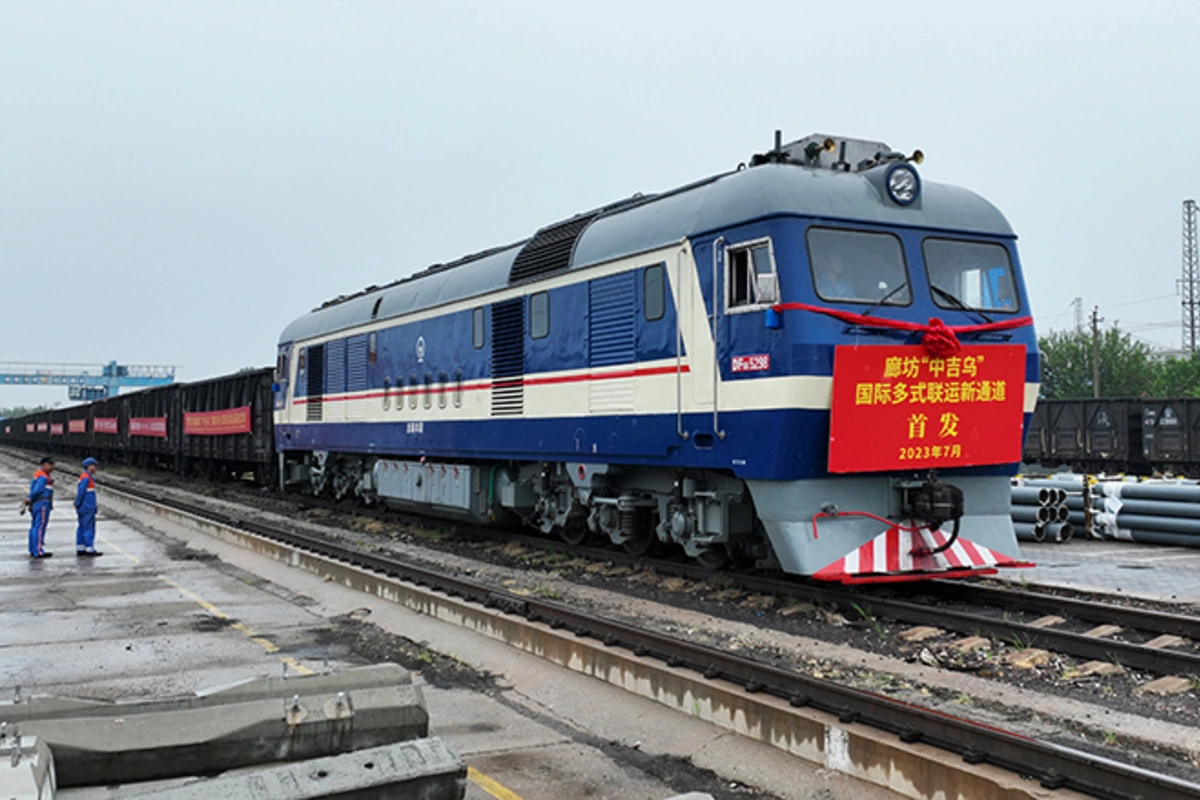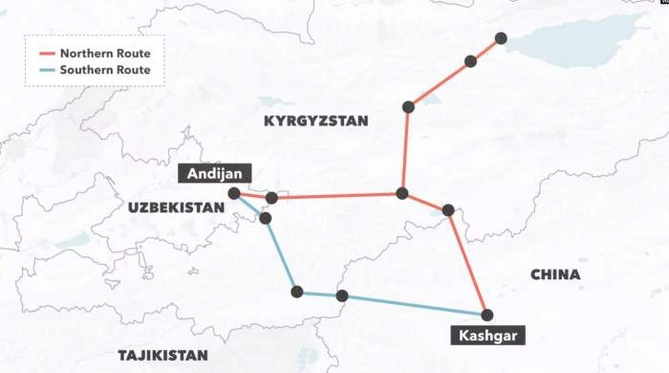
Photo: Xinhua
By Tural Heybatov
On December 27, 2024, construction officially began on the long-anticipated railway connecting China, Kyrgyzstan, and Uzbekistan. This ambitious project, discussed for more than two decades, was inaugurated with a symbolic ceremony in Tosh-Kuchu village, Jalal-Abad Region, Kyrgyzstan. The event was attended by Kyrgyz President Sadyr Japarov, Chairman of China's National Development and Reform Commission Zheng Shanjie, and Uzbek Deputy Prime Minister Jamshid Khodjaev.
President Sadyr Japarov hailed the launch of construction as a historic milestone, describing the new railway as a strategic bridge between East and West. According to Japarov, the railway will significantly diversify transport routes between China, the Middle East, Türkiye, and the European Union, while enhancing the logistical competitiveness of the entire region. Meanwhile, Uzbek President Shavkat Mirziyoyev, in a congratulatory message, emphasized that the project would contribute to the revival of the ancient Silk Road.
The new railway, stretching 454 kilometers, will connect Kashgar (China), Torugart, Makmal, Jalal-Abad (Kyrgyzstan), and Andijan (Uzbekistan). The project includes the construction of 20 stations, 42 bridges, and 25 tunnels, along with the creation of logistics terminals and warehouses. Initial freight volumes are expected to reach approximately 15 million tons annually. In the future, passenger trains will also operate along this route. The railway will integrate with the Trans-Afghan Corridor, providing access to the Middle East and, via Türkiye to European markets.

Photo: Voice of America
The project’s total cost is estimated at around $5 billion, with $1.34 billion allocated for the Kyrgyz segment alone. China has committed to fully financing the Kyrgyz portion of the railway. The project company will allocate 24.5% ownership to both Uzbekistan and Kyrgyzstan, while China will retain the remaining 51%. This ownership structure underscores Beijing’s economic and political role in the region.
The railway is already being referred to as the "project of the century" in Kyrgyzstan, as it opens unprecedented opportunities for the country, which has long been on the periphery of Central Asia’s transport infrastructure. The railway promises not only transit revenues but also increased foreign investment and integration into a unified regional market. For Kyrgyzstan, which currently lacks a well-developed railway network, this project could mark the beginning of a new era of economic growth.
By linking the rail networks of the three countries, the project will create an integrated transportation system connecting Central Asia to the Middle East, Europe, and beyond. This development will significantly boost Central Asia’s importance as a key logistical hub and provide access to maritime routes via China.
However, the path to completing the railway will not be without challenges. The route requires the construction of numerous tunnels and high-altitude bridges, adding to the complexity and timeline of the project. Differences in railway track gauges between the countries further complicate matters. Despite these hurdles, China is determined to complete the railway as quickly as possible-President Japarov has expressed hope for a 4-5 year construction timeline. Nevertheless, experts caution that the actual timeframe may be considerably longer.
For Kyrgyzstan, which has the second-highest poverty rate in Central Asia, the significance of this project cannot be overstated. The railway is expected to spur industrial development, particularly in the mining sector, which is a cornerstone of the country’s economy. Additionally, the project will create new jobs, stimulate infrastructure development, and attract further foreign investment.
Another critical development is the construction of the Manas Trade and Logistics Center near Bishkek, also financed by China. Estimated to cost $4 billion, this center will serve as a major hub for the storage, processing, and transportation of goods. It will also be integrated with the new railway, creating additional economic opportunities for Kyrgyzstan.
While the economic benefits are clear, the project also amplifies China’s influence in the region. Some experts have highlighted potential political risks associated with such close cooperation with Beijing. However, as Kyrgyz analysts point out, the advantages of participating in this project far outweigh any potential challenges. China has long demonstrated its commitment to the stability and development of Central Asia, as evidenced by the numerous initiatives it has undertaken in the region.
During the ceremony, Sadyr Japarov expressed confidence that the completion of the railway would symbolize the revival of the Silk Road. “I am convinced that this project will not only strengthen ties between the peoples of the East and West but also make a significant contribution to the development of our region,” he stated.
In summary, the China-Kyrgyzstan-Uzbekistan railway project promises to be more than just an infrastructure endeavor; it is poised to become a geopolitical breakthrough for Central Asia. The region, which has long been on the margins of global trade flows, is finally positioning itself as a crucial bridge between the world’s largest economies.
Share on social media
